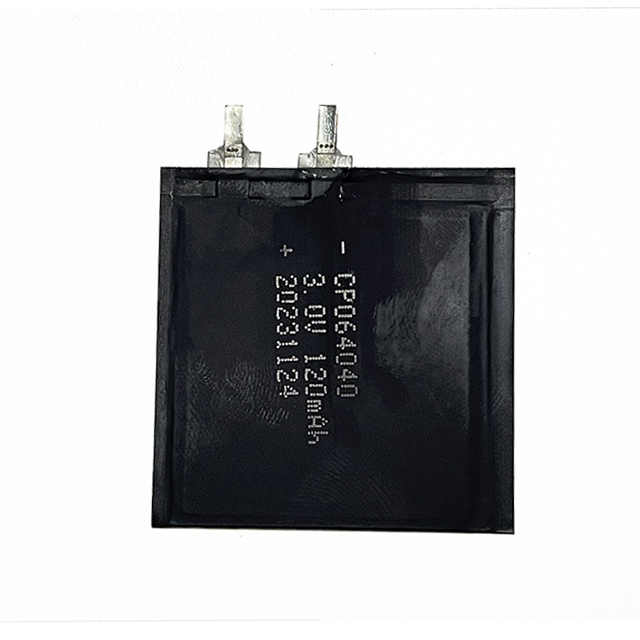The Versatility and Advantages of Non-Rechargeable 3.0V Lithium Manganese Dioxide (LiMnO2) Thin Cells in High-Demand Applications
The Versatility and Advantages of Non-Rechargeable 3.0V Lithium Manganese Dioxide (LiMnO2) Thin Cells in High-Demand Applications

Introduction
In the ever-evolving landscape of battery technology, the demand for reliable, high-performance power sources that can withstand diverse environmental conditions and meet the unique requirements of various applications continues to grow. Among these, non-rechargeable 3.0V Lithium Manganese Dioxide (LiMnO2) thin cells have emerged as a preferred choice for numerous industries, thanks to their exceptional temperature characteristics, stable discharge profiles, and robust packaging that ensures extended shelf life. This article delves into the intricacies of LiMnO2 thin cells, exploring their unique features, applications, and why they are the perfect fit for scenarios requiring high currents after prolonged periods of inactivity.
Understanding Lithium Manganese Dioxide (LiMnO2) Technology
Lithium Manganese Dioxide (LiMnO2) batteries belong to the primary lithium battery family, meaning they are designed for single-use and cannot be recharged. These batteries utilize lithium metal as the anode and manganese dioxide (MnO2) as the cathode, with an electrolyte typically consisting of a lithium salt dissolved in an organic solvent. The combination of these materials enables LiMnO2 batteries to deliver a nominal voltage of 3.0V, which is higher than traditional alkaline batteries, making them ideal for powering devices that require higher voltage or more compact battery sizes.
One of the key advantages of LiMnO2 technology lies in its high energy density, allowing for more power to be packed into a smaller package. This feature, coupled with its thin and lightweight design, makes LiMnO2 batteries particularly suitable for portable electronics, medical devices, and other space-constrained applications.
Excellent Temperature Characteristics
One of the standout features of LiMnO2 thin cells is their exceptional temperature performance. These batteries can operate reliably in a wide range of temperatures, from as low as -40°C to as high as 85°C, with some advanced models even exceeding these limits. This wide operating temperature range makes LiMnO2 batteries an ideal choice for applications exposed to extreme environmental conditions, such as outdoor electronics, military equipment, and aerospace systems.
Moreover, LiMnO2 batteries exhibit minimal temperature-dependent voltage changes, ensuring a stable and predictable power output across varying temperatures. This stability is crucial in maintaining the performance of devices that rely on precise voltage levels for optimal operation.
Flat Discharge Curve
Another notable advantage of LiMnO2 thin cells is their flat discharge curve. Unlike some other battery chemistries that experience a noticeable voltage drop as they discharge, LiMnO2 batteries maintain a relatively constant voltage throughout most of their discharge cycle. This characteristic is particularly beneficial for devices that require consistent power levels, such as sensors, memory backup systems, and portable medical devices.
The flat discharge curve also simplifies power management, as designers can rely on a predictable voltage output without the need for complex voltage regulation circuitry. This, in turn, leads to more efficient energy utilization and cost savings in both the design and operation of powered devices.
Hermetically Sealed Nickel-Plated Steel Container
The packaging of LiMnO2 thin cells is another crucial aspect of their durability and longevity. These batteries are typically housed in hermetically sealed nickel-plated steel containers, which provide excellent protection against moisture, dust, and other environmental contaminants. This robust packaging ensures that the battery's internal chemistry remains stable, even under harsh conditions, extending its shelf life significantly.
The nickel-plating on the steel container also enhances the battery's corrosion resistance, further safeguarding against potential damage caused by exposure to corrosive environments. This level of protection is vital for applications that require batteries to be stored for extended periods before use, such as emergency backup systems, remote monitoring devices, and other devices that may not be activated frequently.
Applications of Non-Rechargeable 3.0V LiMnO2 Thin Cells
Given their unique features and advantages, non-rechargeable 3.0V LiMnO2 thin cells find applications across a wide range of industries and use cases. Some of the most prominent applications include:
Portable Electronics: LiMnO2 batteries are often used in portable electronics, particularly those requiring high voltage or compact designs. Smartwatches, fitness trackers, and other wearable devices often rely on LiMnO2 batteries for their lightweight, high-energy density, and stable discharge profiles.
Medical Devices: Medical devices, such as glucose meters, ECG monitors, and implantable medical devices, require reliable and predictable power sources. LiMnO2 batteries, with their flat discharge curves and extended shelf lives, are well-suited for these applications, ensuring accurate and consistent performance over extended periods.
Remote Monitoring and Sensing: In remote monitoring and sensing





